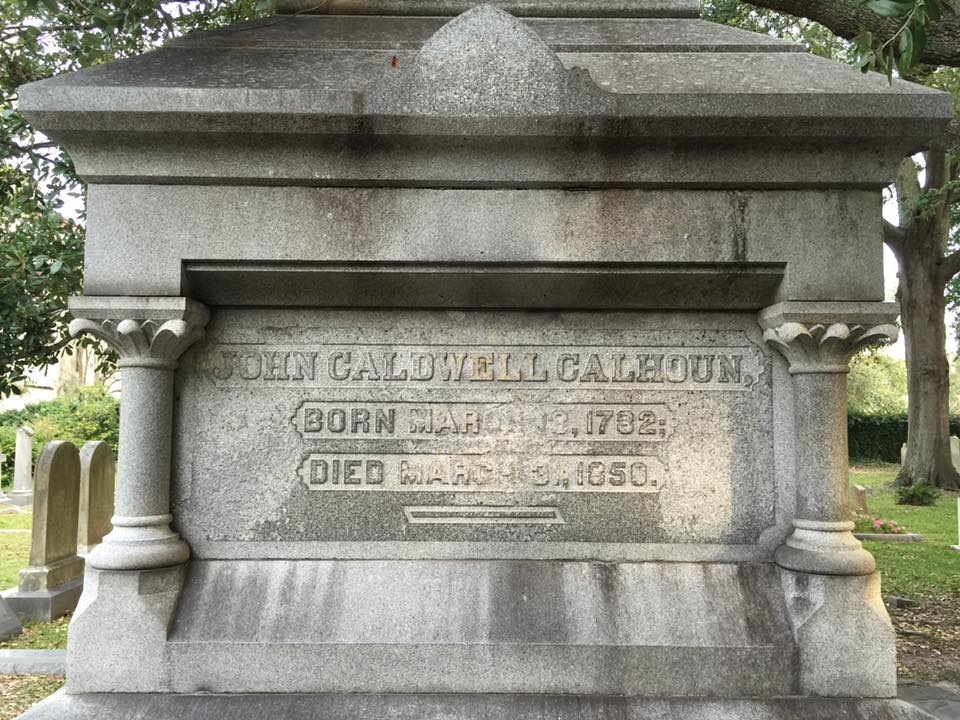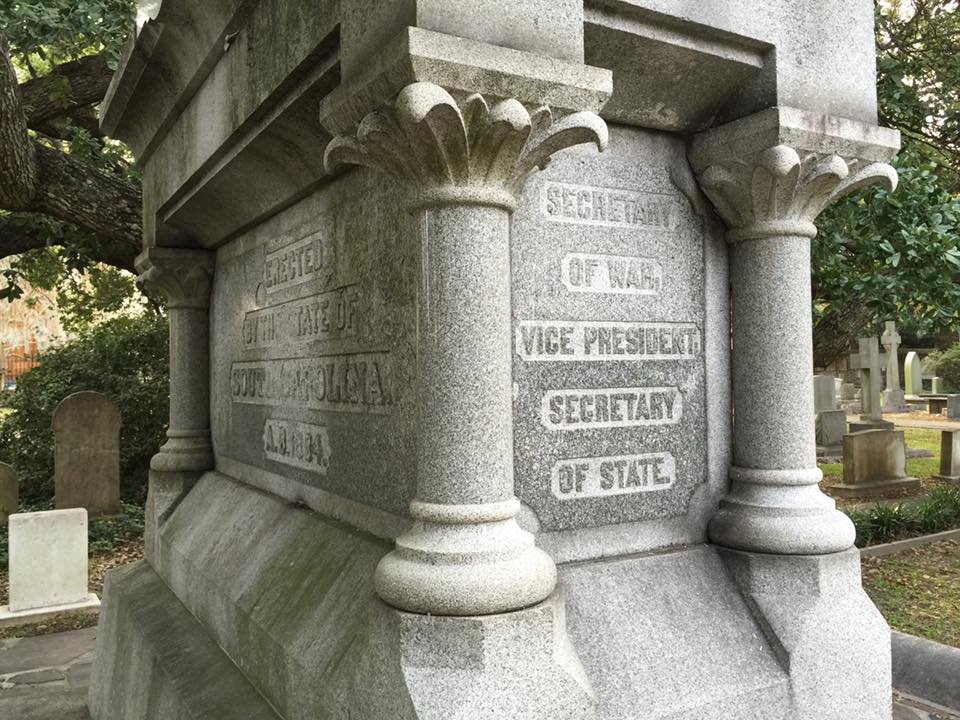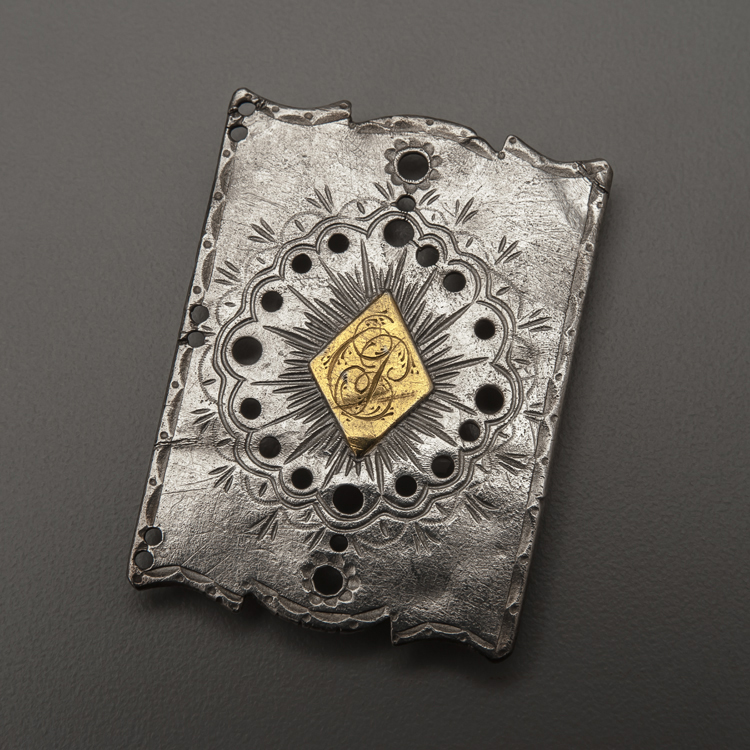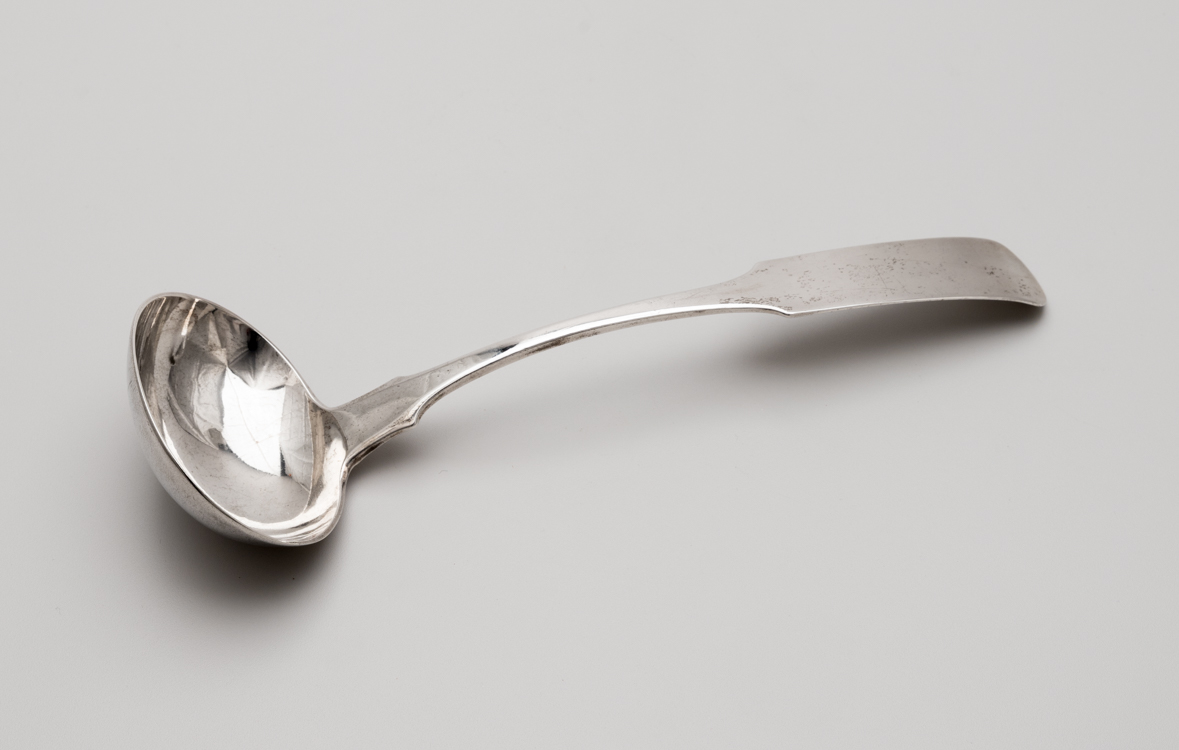 One of South Carolina's most famous historical figures is John Caldwell Calhoun. He was the 7th Vice President of the United States, a congressman, a senator and secretary of the presidential cabinet. Currently his place of rest is Saint Phillip's Episcopal Church in Charleston South Carolina. This old Charlestonian left a long, infamous legacy of history.
One of South Carolina's most famous historical figures is John Caldwell Calhoun. He was the 7th Vice President of the United States, a congressman, a senator and secretary of the presidential cabinet. Currently his place of rest is Saint Phillip's Episcopal Church in Charleston South Carolina. This old Charlestonian left a long, infamous legacy of history. John Calhoun was born March 18, 1782 in Mount Carmel, South Carolina. John's father, Patrick Calhoun, had a reputation as an 'indian fighter'; but he was also well known in their community as a surveyor, farmer, and politician, he was a member of South Carolina Legislature. According to Wikipedia, Patrick Calhoun was a Patriot during the American Revolution and he opposed the ratification of the Constitution 'on the grounds of states' rights and personal liberties'. Patrick's politics and political views greatly influenced John's beliefs John would later adopt his father's states' rights beliefs during his own political career.
In 1811 John married Floride Bonneau Colhoun. She was the daughter of a rich senator and was a part of the Charleston high society. Together John and Floride had ten children. But according to Wikipedia, sadly three of them died in infancy.
 |
| Find a Grave; John Calhoun's Grave: Saint Philip's Church |
Ethan Rafuse, from History Net, calls John Calhoun "The man who started the Civil War". Calhoun devoted much of his time defending slavery and believed in 'states' rights'- meaning that if a state believed a federal law was unconstitutional that a state could make the executive decision not to obey it. Calhoun believed that 'to destroy slavery, would be to destroy a powerful symbol of what motivated the Southern man to improve himself.' He believed the South was a minority compared with the booming industrialized North. The South's agrarian culture depended on the use of enslaved Africans in order to thrive.
John Calhoun argued that the free laborer in the North was just as much a slave to his boss as an African slave was in the South. Claiming that, "The amount of money a master invested in his slaves made it economically unfeasible to mistreat them or ignore their working and living conditions." John Caldwell calhoun died March 31, 1850 a decade before the Civil War. Today we know how wrong slavery is and many of us would disagree with Calhoun's politics. But this old Charlestonian left a significant impact on American history and influenced many during his time. Although John Calhoun helped influence one of the United States' darkest times, he is still highly recognized for his political theory, his philosophy and his mind in contemporary issues.
 |
| Find a Grave; photos by Ryan David Schweitzer |










